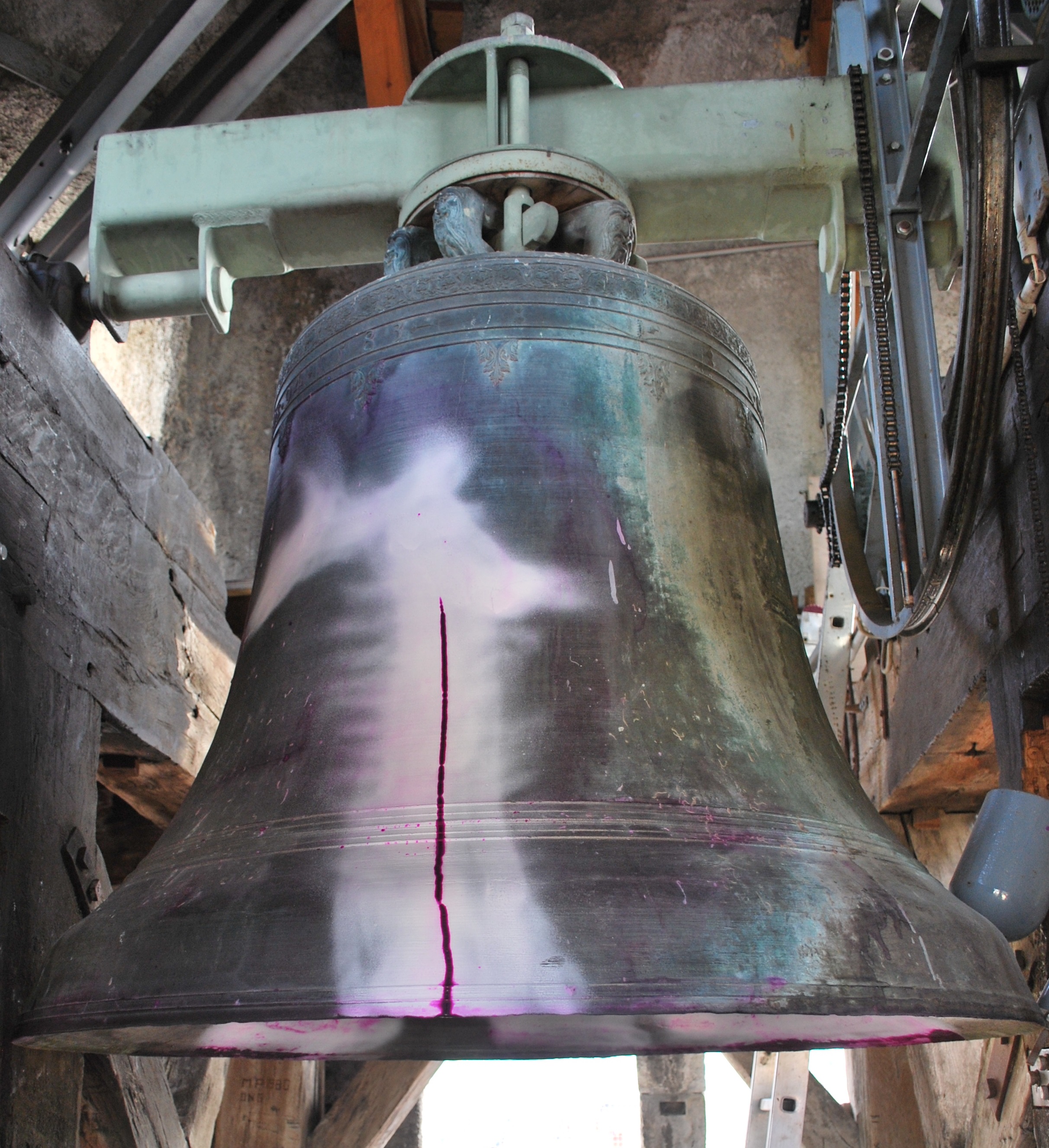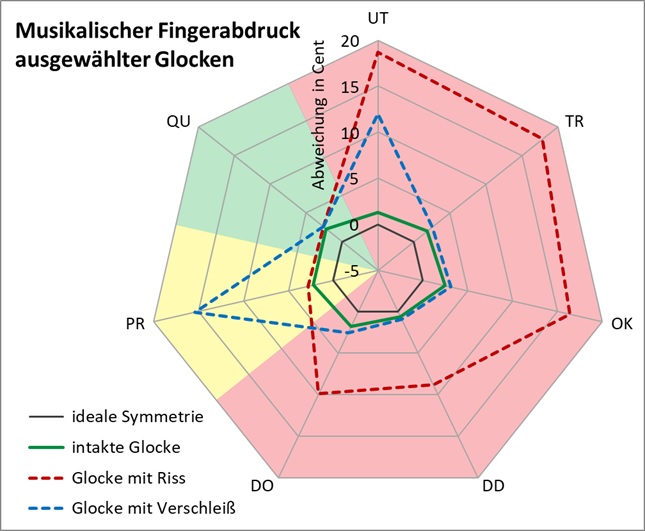Background to the Citizen Science project “Protect bells”
If a crack forms in a bell, this will end up compromising its ring so severely that it can no longer be used. To repair a cracked bell involves welding – or it might even need melting down for recasting. Particularly in Germany, where something like two-thirds of all bells were destroyed during the two world wars, each bell that no longer rings represents a major loss of cultural heritage.
We set ourselves the aim of trying to avoid the removal of any more bells – whether old or new – from a tower in future, due to excessive wear and tear or cracks caused by ringing.
To achieve this, we have developed a special procedure for capturing musical fingerprints, which enables us to reliably monitor the condition of bells fairly simply. Each musical fingerprint depicts the vibration analysis of an individual bell, based on sound recordings. These vibration analyses make it possible to diagnose any cracks that are starting to form, even before changes in how the bell sounds become audible to human ears.
To detect damage to bells at such an early stage, before it is audibly perceptible, calls for repeated recordings of the bell’s sound to be made the same way. For historically valuable bells or ones that are known to have flaws, we recommend checking the musical fingerprint every 2–5 years; less frequently for bells in good condition (every 10 years).
The sound recordings required to produce the musical fingerprint follow a fixed pattern, but don’t require specialist expertise beyond the training that we provide. The more bells that we can analyse and monitor using these musical fingerprints, the less damage is likely to be suffered in the future.





 YouTube - ECC-ProBell
YouTube - ECC-ProBell